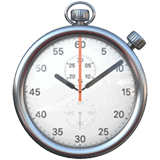
A payslip is a record of what you have earned in a given period. You will typically receive your payslip a day before or on the day your salary is paid.
The payslip gives you an overview of how much you have worked, the supplements you have received, and the various deductions and contributions that you pay as an employee in the country where you live. We will discuss these in more detail here.
First of all, your payslip contains basic information about you - your name, address, and civil registration number. The payslip also contains information about your employer, their address, and company registration number.
In addition, the payslip contains an overview of the period it covers and how much you have worked during that period. After the basic information, you could say that the payslip contains a big calculation. The result of that calculation is the amount of money that ends up in your account.
However, there are some elements of the calculation that are not easy to understand. We will explain them one by one.
Absolutely! According to the Payment of Wages Act 1991, all employees have the right to receive a payslip. Additionally, starting in April 2019, The Employment Rights Act 1996 (Itemised Pay Statement) (Amendment) Order 2018 mandates that employers include the number of hours being paid out on an employee's payslip.
However, there are some exceptions to this rule. Individuals who are not considered employees, such as freelancers and contractors, are not entitled to receive a payslip.
This is the name and address of the employee receiving payment for their work during the payment period.
This is the name and address of the employer responsible for issuing payment to the employee.
This refers to the specific time period for which the employee is being paid, such as a week, a month, or a specific date range.
This is the total amount of money earned by the employee for the payment period before any deductions are made.
This section shows any deductions that have been made from the employee's gross pay, such as taxes, national insurance, pension contributions, or any other deductions required by law or specified by the employer.
This is the amount of money the employee will receive after all deductions have been made from their gross pay.
This shows the total amount of tax paid by the employee for the current tax year, up to the payment period covered by the payslip.
This section displays the employee's tax code and national insurance number, which are unique identifiers used by tax authorities to track an individual's tax obligations.
This section displays the total number of hours worked by the employee during the payment period, which may be required by law or specified by the employer.
Note that this subject may not be included on all payslips, as it depends on the country or region where you work.
Standard time is your normal working time. These are the hours agreed in your contract.
Note that this subject may not be included on all payslips, as it depends on the country or region where you work.
Overtime is any work you have done in excess of your normal working hours. On your payslip, you will see how much overtime you have worked and the rate at which overtime is paid.
Note that this subject may not be included on all payslips, as it depends on the country or region where you work.
Allowances are the salary you receive in addition to your basic salary. This could be, for example, allowances for overtime, working on public holidays, or weekends. You may also receive seniority allowances if you have worked in the same place for a longer period, or other allowances you have negotiated based on your qualifications, for example. Your payslip will show you the rate for the type of allowance you have received.
Note that this subject may not be included on all payslips, as it depends on the country or region where you work.

It is important that you learn to understand your payslip because it gives you an overview of your income and thus the basis of your finances. If you don't understand how to read your payslip, you may miss errors such as the number of hours you have worked. This can lead to missed pay or deductions.
Your payslip also contains other information that is good to keep up to date for various reasons. For example, when your salary will be in your account, how much you earn from overtime or how much money you have earned in pension.
For hourly paid positions, the payslip can lead to disagreements between employees and managers. This is because it can be difficult to keep track of how much an employee has worked, what hours have been worked overtime, and similar factors.
For example, if two employees have swapped shifts internally, this may not necessarily be recorded in the work schedule. This can lead to incorrect registration of the hours worked and the employee may miss out on pay or be overpaid.
When your employer uses a workforce management system like Workfeed to take care of shift planning and time tracking, a lot of disagreements between employers and employees can be avoided. It also allows everyone to have more overview and provides more transparency.
Is your employer not using a digital solution like Workfeed? Introduce your employer to Workfeed and receive a giftcard of choice ($50) if they become a customer.
When the salary is due, the employer does not have to manually export the work schedule and import it into the payroll system. Workfeed can be integrated with the payroll system so that the payroll is automatically synchronized. With one click of a button, the hours are sent to payroll. As an employee, you can also continuously monitor your gross salary from the Workfeed app.

Workfeed's workforce management system can ensure that all employees always receive a correct payslip. This is because hours, allowances, and absences are recorded digitally, so there are no errors during manual entry.

Using Workfeed means you don't have to spend time manually recording changes to your work schedule. All the employer has to do is approve the changes and Workfeed will make sure they are recorded correctly. When it's time to send the hours to payroll, the employer only needs to click one button.

Workfeed is loved by employers and employees across the globe, earning an overall rating of 4.7 out of 5 possible stars on Trustpilot. It's a guarantee that your workplace is choosing a workforce management solution that works.
